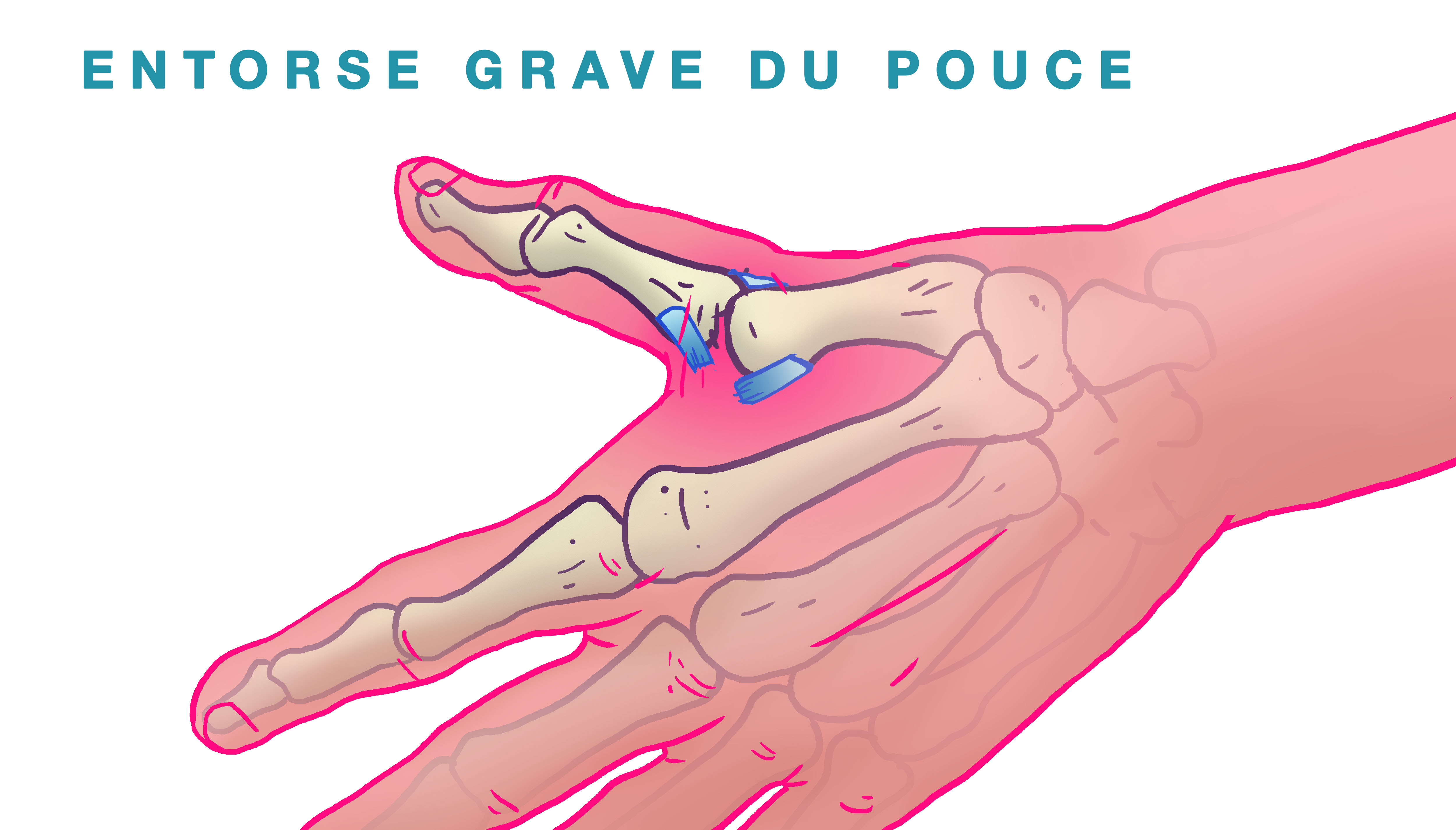
Contact us
If you have a question or suggestion, please contact us via our contact form.
Lateral joint stability
Lateral stability of the thumb's metacarpophalangeal joint is particularly important in the thumb-index pinch. This joint stability depends on the integrity of the lateral ligaments: the medial collateral ligament (located on the index finger side)
which is most frequently affected by trauma (9 out of 10 cases), and the lateral collateral ligament.
The term "sprain" covers all damage to ligamentous structures, from simple stretching to complete rupture (severe sprain) of the lateral ligament of the thumb's metacarpophalangeal joint.
Mechanism of injury
Sprains of the medial collateral ligament occur as a result of trauma, which causes the thumb to suddenly move outwards. This is an extremely frequent pathology, most often the result of a sporting accident, notably a ski fall (either the thumb falls into the snow with the rest of the body, which continues to slide, or the thumb flips over and gets stuck in the ski pole strap). Similar pictures can be found in ball sports.
What are the clinical signs of a severe thumb sprain?
What additional tests are useful for diagnosis?
What is the treatment?
.
What are the risks of not recognizing a severe thumb metacarpophalangeal joint sprain?
Unfortunately, this is a very common occurrence. Many patients who have had a serious sprain that went undiagnosed and which they themselves no longer necessarily remember, consult us in the medium or long term because of the onset of disabling pain in their daily lives. Initially, the pain subsides after the initial trauma, and patients adapt to their joint instability (due to non-repair of the medial collateral ligament). This instability will be reflected in a loss of strength, and often the sensation that their thumb tends to "leak" when gripping with the thumb-index clamp. Progressively, the patient will experience pain linked to premature wear of the joint (osteoarthritis). This osteoarthritis occurs more rapidly in the thumb, as it is the most frequently used finger on the hand, and a joint that operates in areas of high mobility.
